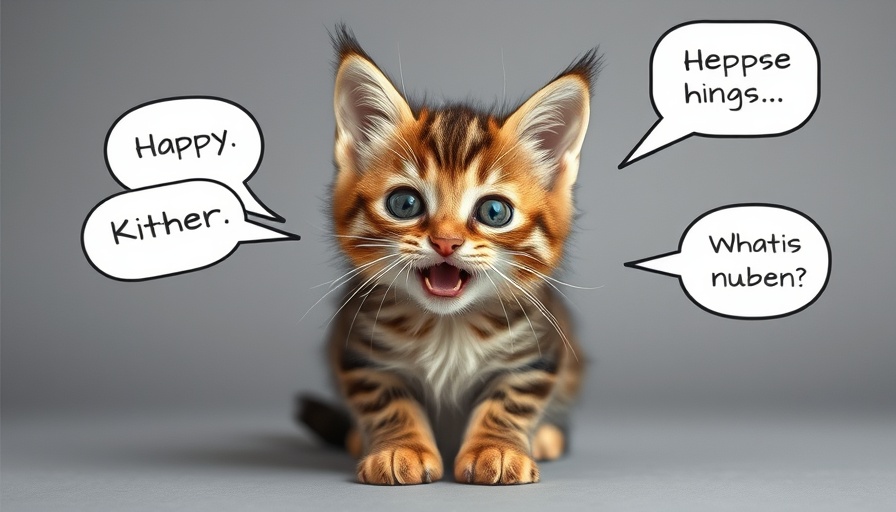
Unraveling the Mystery: Why Cats Talk to Us
Have you ever wondered why your feline friend seems to converse exclusively with humans? Unlike their wild ancestors, domestic cats have honed their vocal skills, creating an intricate "language" tailored specifically for human communication. This adaptation is not just charming; it showcases the cat’s intelligence and understanding of interspecies relations. While adult cats rarely meow at each other, their vocalizations serve as a crucial link to connect with their human companions. A cat’s meow can be seen as a call for attention, food, or companionship, confirming their remarkable ability to communicate effectively in a way that resonates with us.
Decoding the Sounds: From Purrs to Trills
Every sound your cat makes has a purpose. The subtle variations in their vocalizations — from soft purrs and chirps to urgent meows and trills — are more than mere noise; they reflect their emotional states and needs. For instance, a content cat may emit a gentle purr, while an excited feline might trill or chirp in anticipation of playtime. Understanding these distinct sounds can enhance your interaction with your cat, fostering a deeper bond. Observing and responding to their specific vocal cues enriches both your lives, affirming the unique companionship cats offer.
The Role of Body Language in Feline Communication
Equally important to vocalization is how cats use body language to express themselves. A cat’s tail position, ear movements, and even their eye contact can provide significant clues about their feelings. For example, a cat that approaches with a raised tail is often expressing confidence and friendliness, while a lowered tail might indicate stress or insecurity. By learning to read these signals, cat owners can better respond to their pets’ needs, ensuring a harmonious living environment.
Increased Vocal Behavior in Senior Cats
Owners should also be aware that senior cats may become increasingly vocal. This change can be attributed to several factors, including hearing loss or cognitive changes associated with aging. If a once quiet cat suddenly starts meowing more frequently, it might signify discomfort or anxiety, suggesting it’s time for a veterinary evaluation. Understanding these patterns ensures that every member of your family, including your pets, receives the care they need through all stages of life, reinforcing the importance of attentive pet health practices.
Creating a Two-Way Communication Channel
Building a solid line of communication with your cat is essential for mutual understanding. Techniques such as slow blinking or gentle petting can encourage your cat to relax and trust you more fully. This method not only eases their anxiety but also enhances the relationship you share. Just as your cat learns to communicate with you, your ability to express understanding and love can lead to fewer misunderstandings and a more rewarding interaction.
The Heart of the Matter: Why This Knowledge Matters
In a world where pet ownership increasingly mirrors a familial bond, understanding feline communication is crucial. By delving deeper into how cats express their needs and emotions, pet owners can provide a nurturing environment that supports their beloved companions during both the good times and challenging ones. Knowing how to decode your cat’s language is not just about improving communication; it’s about enriching the quality of life for you both.
As we continue to develop our understanding of feline behavior, it’s clear that embracing this unique form of communication can lead to stronger, more meaningful relationships with our pets. If you're ready to deepen your bond with your furry friend, take the time to observe and engage with their vocalizations and body language. This investment into understanding your cat will pay off in countless moments of joy and connection.
 Add Row
Add Row  Add
Add 




Write A Comment